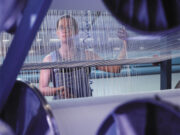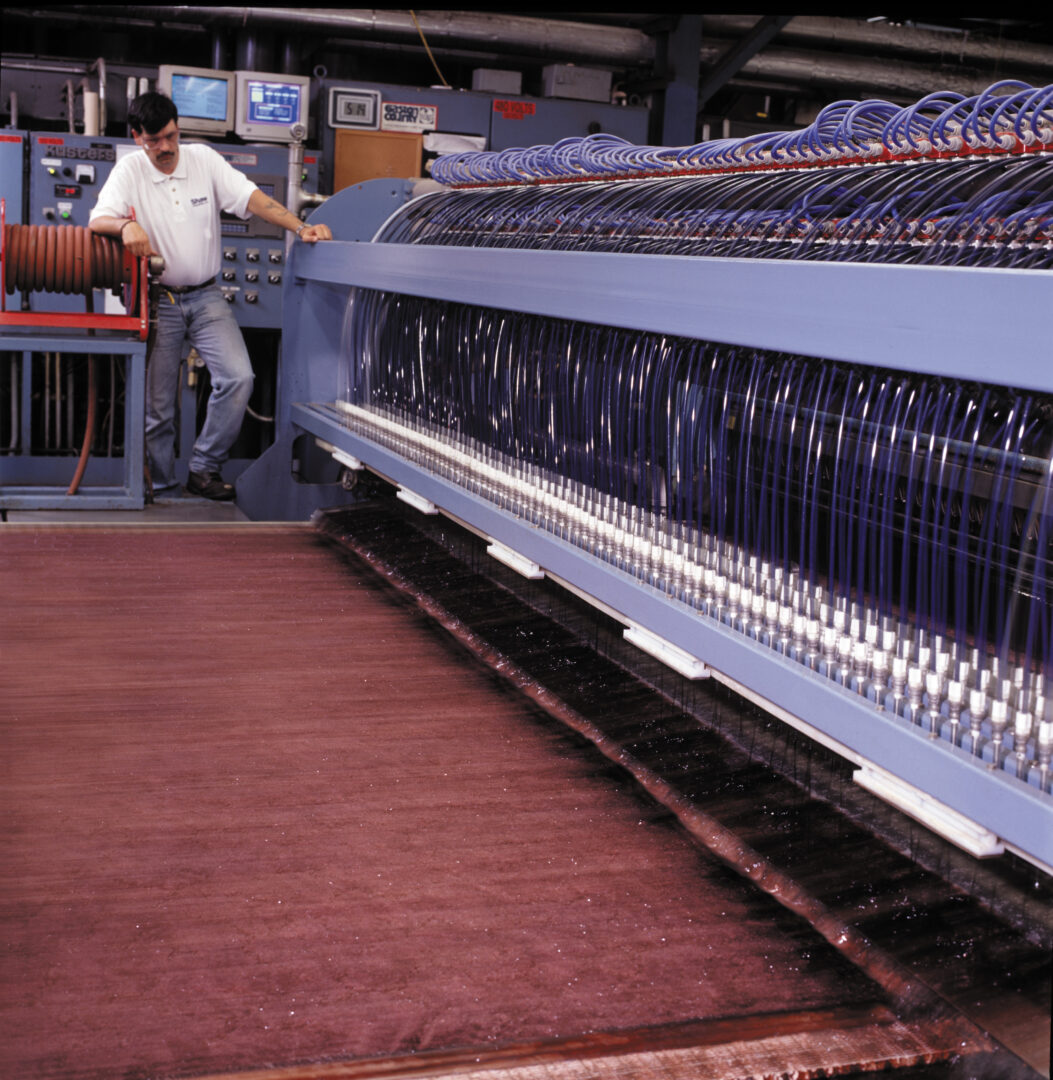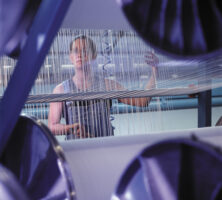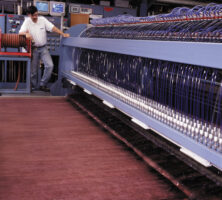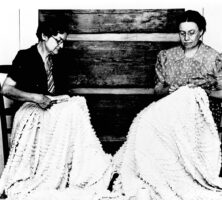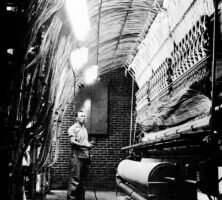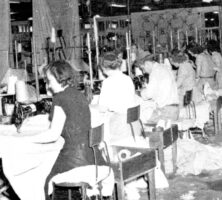Shaw Industries, a subsidiary of Berkshire Hathaway, is the largest manufacturer of carpet in the world today, with sales of more than $4.5 billion in 2003. Shaw also markets other floor coverings, including hardwood and vinyl. The company employs more than 30,000 workers, most of them in Georgia. Shaw Industries, its founders, and its predecessor firms have played a key role in the creation of northwest Georgia’s dominant carpet industry and in the emergence of Dalton as the carpet capital of the world.
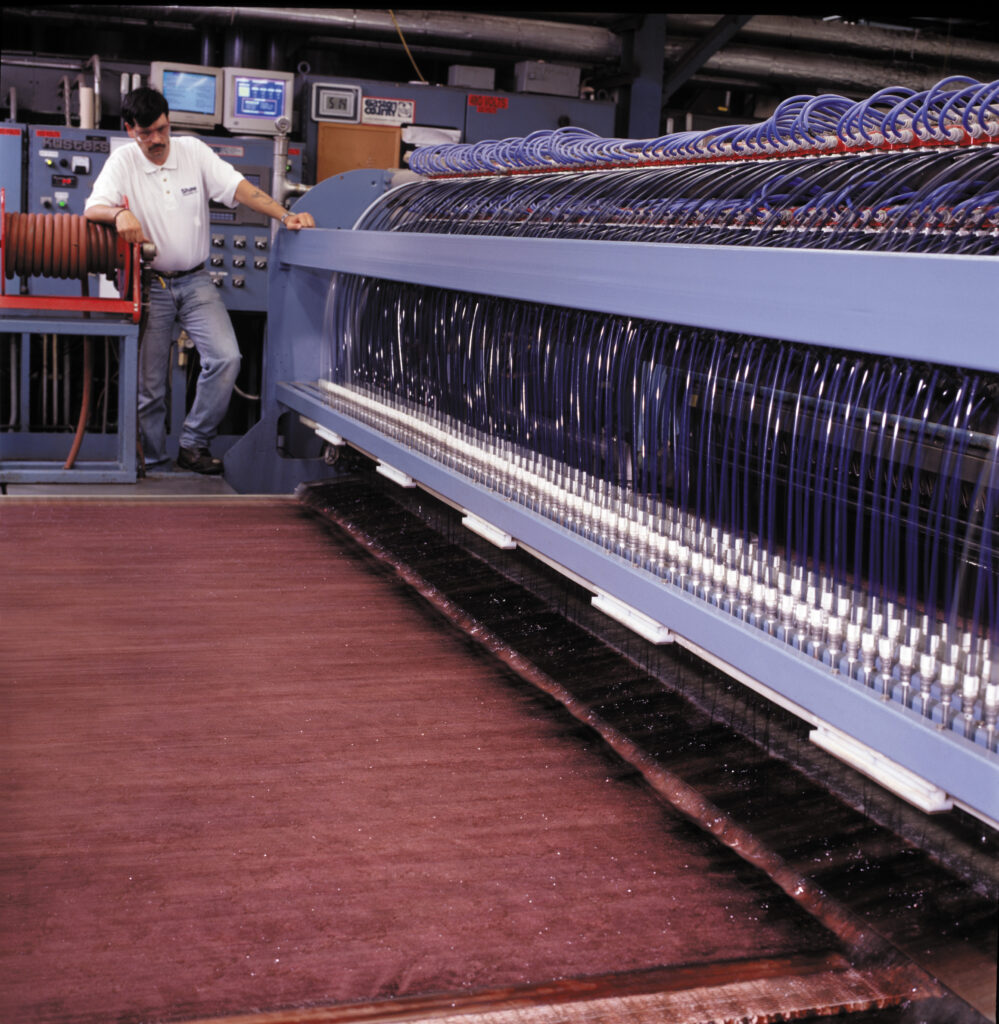
Courtesy of Shaw Industries, Inc.
Shaw Industries can trace its roots back to the old tufted bedspread industry that thrived in the Dalton area in the 1930s and 1940s. In the mid-1940s Clarence Shaw, a Georgia Institute of Technology graduate, started a firm to dye and finish small tufted products like bedspreads, robes, and small rugs. Shaw’s Star Dye Company established a solid reputation and a stable clientele among makers of such products in the Dalton area. During the 1950s many manufacturers of small tufted goods shifted toward the production of a heavier and more expensive product—carpet. By the end of the 1950s, sales of bedspreads and other small tufted goods stagnated and began to decline, while the market for tufted carpets expanded by leaps and bounds.
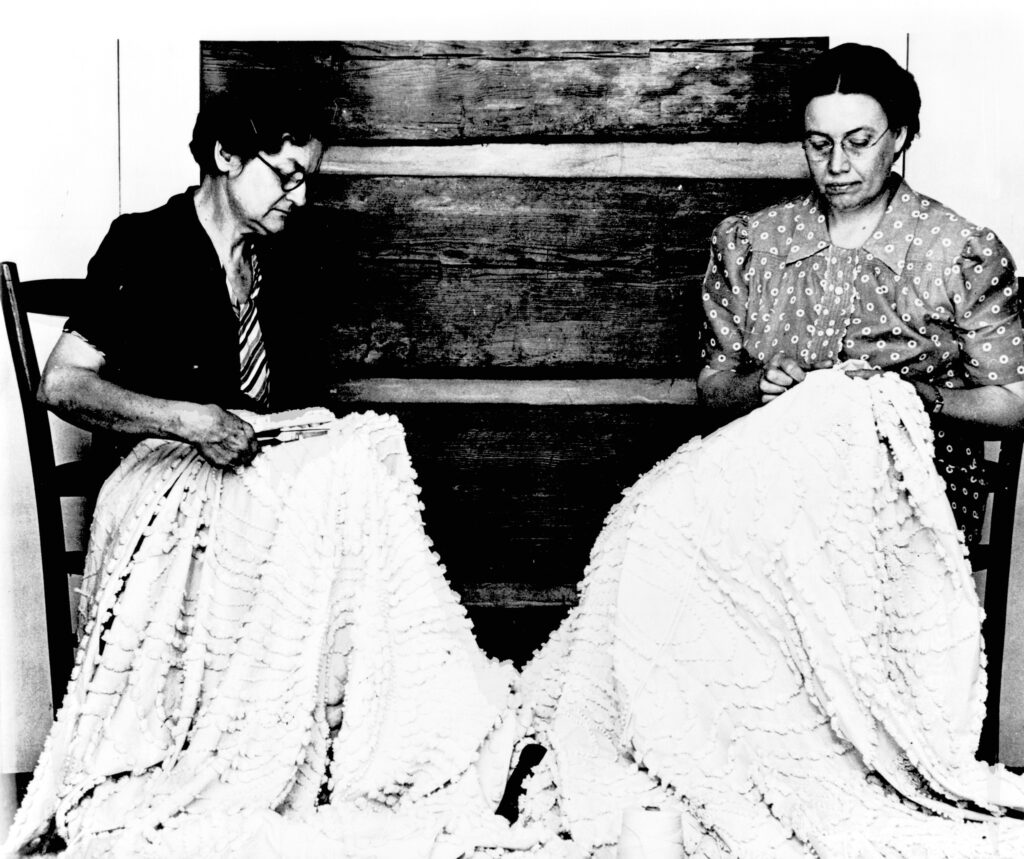
Courtesy of Shaw Industries, Inc.
Clarence Shaw died in 1958, leaving the management of the family business to his sons, Robert E. and J. C. Shaw. The Shaw brothers began to exploit the now-booming market for tufted carpets by establishing Star Finishing Company in 1960. While Robert managed Star Finishing Company during the 1960s, J. C. left Dan River Mills in the mid-1960s to establish his own carpet-making company in northwest Georgia. Star Finishing rose quickly and became the top commission finisher in the carpet industry by 1967. In that year J. C. and Robert joined forces to acquire the venerable Philadelphia Carpet Company. The Shaw family and associates created the Philadelphia Holding Company to acquire the old carpet maker, which was renamed Shaw Industries in 1971.
Shaw Industries succeeded in the late 1960s and the 1970s by adopting new technology and using it efficiently. Other manufacturers were sometimes quicker to introduce new technology (like printed carpets and continuous dyeing ranges), but Shaw’s Star Finishing division generally proved more efficient in turning new processes into profitable operations. Shaw Industries became a publicly traded company in 1971 but used the bulk of the proceeds to reinvest in the company. Chief executive officer Robert E. Shaw often observed that he was not interested in building a business in order to sell it; he wanted to build an institution that would last.
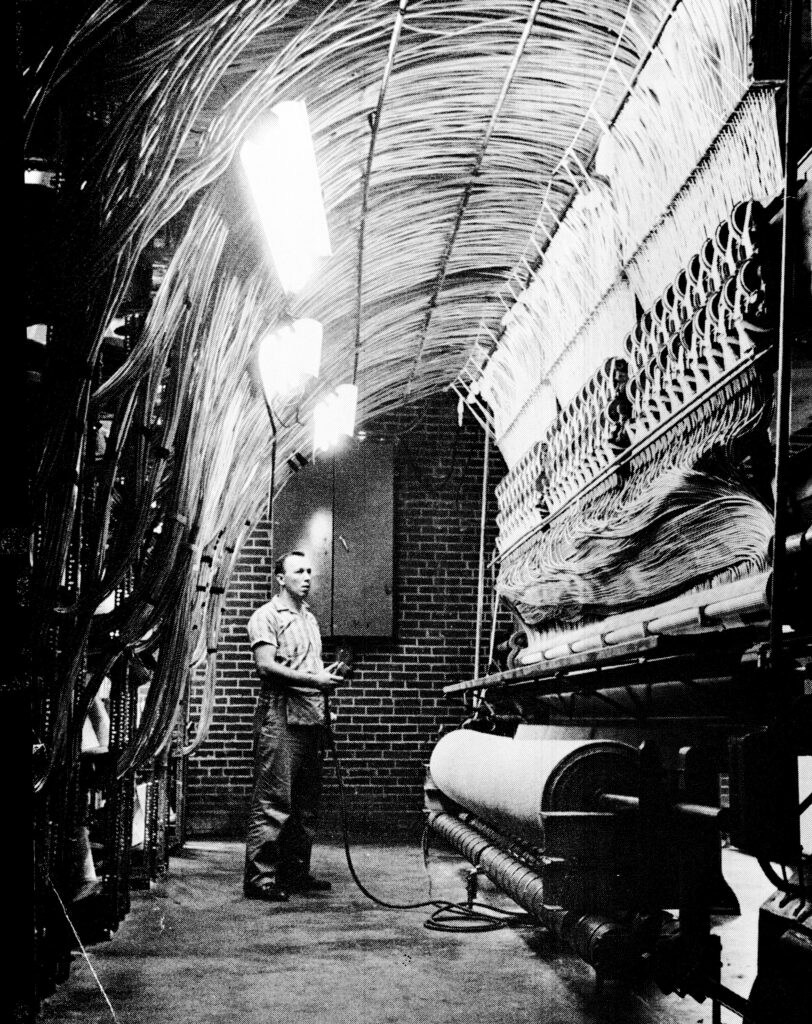
Courtesy of Shaw Industries, Inc.
By the end of the 1970s Shaw Industries had risen to a prominent place among American carpet manufacturers, consistently placing among the top five in terms of sales. During the severe recession of the early 1980s, Shaw made a series of strategic moves that catapulted the firm to the top spot among carpet makers by a wide margin. Shaw opted in the early 1980s to go into competition with its largest customers—wholesale distributors. Distributors sold most of the carpet in the United States in 1980, and they extracted a sizable profit margin. Shaw boldly expanded its retail sales force, invested heavily in training, and went direct to small retailers. Shaw also integrated vertically in the 1980s, acquiring a number of yarn mills to reduce raw materials costs. With these and other calculated risks, Shaw rose to the top of the industry by 1986.
In 1987 Shaw touched off a major movement toward consolidation in the carpet industry by acquiring a large competitor, Cabin Crafts (technically, the carpet and rug division of West Point Pepperell). Over the next few years Shaw acquired other major competitors, such as the carpet division of Armstrong World Industries (E & B Carpets) and Salem Carpets. In 1992 Shaw acquired the polypropylene production division of Amoco Fabrics and Fibers, thus positioning the company to take advantage of the fastest growing new fiber in the carpet industry. Shaw was the unchallenged leader among American carpet manufacturers in 1992.
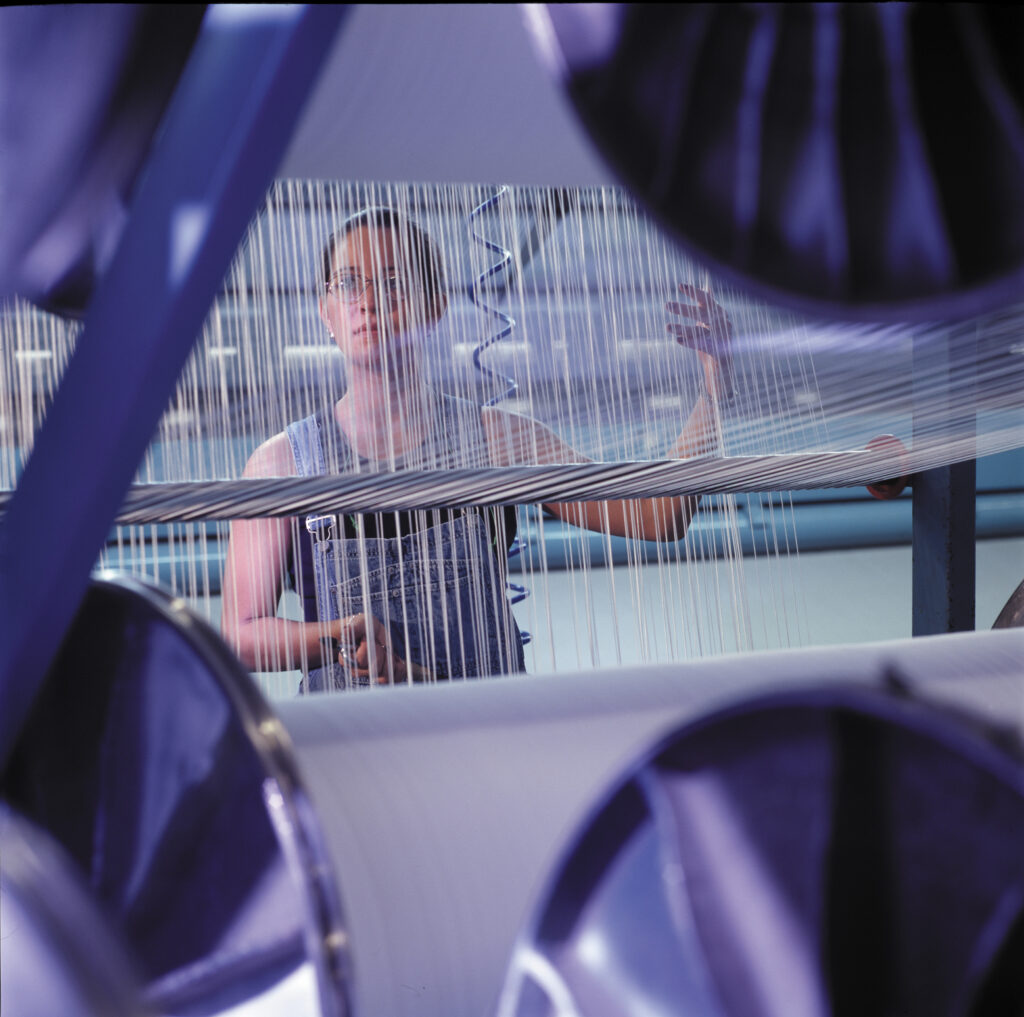
Courtesy of Shaw Industries, Inc.
Shaw made a serious strategic misstep in 1995. The company attempted to extend its vertical integration in marketing to the final step—retail sales to end consumers. With a series of acquisitions of large chains and individual stores, Shaw moved into the retail carpet market. The move proved a massive drain on company resources, and Shaw’s stock price tumbled as the company struggled with the retail venture. In 1998 Shaw began a retreat from the retail market by selling off many of the units. The company returned to its avowed core competencies—efficient manufacturing and effective service to retailers. In August 1998 Shaw confirmed this return to older values by acquiring another major manufacturer, Queen Carpets. As the company neared the end of the twentieth century, it appeared to be back on course.
Legendary investor Warren Buffett purchased a controlling interest in Shaw Industries in early 2001. Buffett and his holding company, Berkshire Hathaway, have long been famous for buying undervalued but well-managed companies. Buffett also tended to require existing management to stay on and run Berkshire’s subsidiaries. For the Shaw family, the Berkshire deal freed the company from the short-term outlook imposed by Wall Street analysts; Shaw now had only one stockholder—Berkshire Hathaway. The deal also allowed the company’s successful management team to remain in place and continue guiding the company into the twenty-first century.


